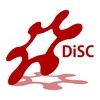Gruppi di ricerca
28 research groups develop the research activities at DiSC. They are briefly sketched in the following collection of profiles, each reporting the group name, the structured members, an overview of their main research themes and a representative collection of references.
1. Analytical Chemistry
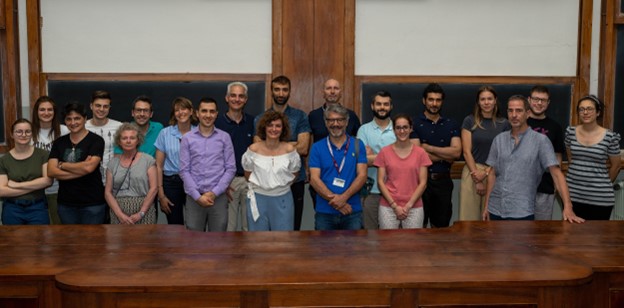
Prof. Paolo Pastore (paolo.pastore@unipd.it); prof. Denis Badocco (denis.badocco@unipd.it); prof. Sara Bogialli (sara.bogialli@unipd.it); dr. Luca Cappellin (luca.cappellin@unipd.it); prof. Valerio Di Marco (valerio.dimarco@unipd.it); dr. Gabriella Favaro (gabriella.favaro@unipd.it); prof. Marco Frasconi (marco.frasconi@unipd.it); prof. Andrea Tapparo (andrea.tapparo@unipd.it); dr. Marco Roverso (marco.roverso@unipd.it); dr. Alessandra Zanut (alessandra.zanut@unipd.it); dr. Fazel Abdolahpur Monikh (fazel.monikh@unipd.it).
The Analytical Chemistry Laboratories are equipped with a range of advanced instruments, such as high-resolution LC-MS (Q-Exactive by Thermo), ICP-MS (Agilent), GC-MS/MS (Thermo), and several others. These instruments are dedicated to various research lines, including:
- emerging contaminants in the environment and food;
- atmospheric chemistry;
- metal-ligand complexation in aqueous solutions for pharmaceuticals;
- applied analytical chemistry;
- optical and electrochemical sensors;
- nanostructured materials for sensing and organ-on-chips applications;
Within the group, a special focus lies on safe-by-design advanced materials, investigating adverse effects of nanomaterials on the environment and human health. This includes developing analytical methods for understanding nanomaterial behavior, exploring interactions with biological components, tracing nanomaterial movement in organisms, and applying them for environmental remediation and risk assessment.
Selected publications:
- An analytical workflow for dynamic characterization and quantification of metal-bearing nanomaterials in biological matrices.Nat Protoc 17, 1926–1952 (2022);
- Porous hydrogel scaffolds integrating Prussian Blue nanoparticles: a versatile strategy for electrochemical (bio)sensing, Sensors and Actuators B: Chemical 2023, 376, 132985;
- Chelation of Theranostic Copper Radioisotopes with S-Rich Macrocycles: From Radiolabelling of Copper-64 to In Vivo Investigation. Molecules 2022, 27, 4158;
- Exploring volatile organic compound emission from thermally modified wood by PTR-ToF-MS, Analyst, 2022,147, 5138-5148;
- Metallic functionalization of magnetic nanoparticles enhances the selective removal of Glyphosate, AMPA, and Glufosinate from surface water, Environmental Science: Nano, 2023, Just accepted paper;
updated 13th July 2023
2. Applied Organometallic Chemistry
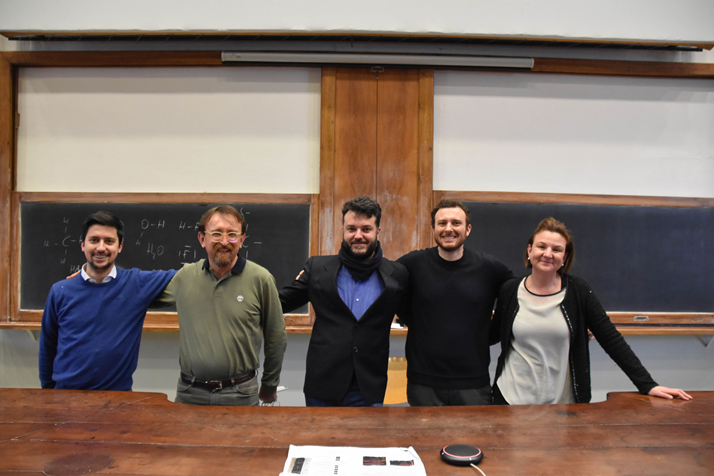
Prof. Alessandro Aliprandi (alessandro.aliprandi@unipd.it); Dr. Marco Baron (marco.baron@unipd.it); Prof. Andrea Biffis (andrea.biffis@unipd.it); Dr. Thomas Scattolin (thomas.scattolin@unipd.it); Prof. Cristina Tubaro (cristina.tubaro@unipd.it);
The group activity focuses on the design, synthesis, characterization and reactivity of selected classes of organometallic compounds with potential application as catalysts, as bioactive molecules or as active components for advanced materials and devices (luminescent devices, sensors, liquid crystals). The main target are late transition metal complexes with N-heterocyclic carbene ligands (NHCs). The structure and properties of the carbene ligands are matched to the metal centre to yield complexes with the desired properties. Ongoing research involves catalysts for C-H functionalizations and CO2 valorization, functional complexes for cooperative catalysis or improved bioactivity, as well as NHC-stabilized molecular gold clusters. We also study the luminescent properties and self-assembly behaviours of organometallic compounds and their application in electrochemiluminescence and chemiluminescence.
- Dinuclear gold(I) complexes with N-phosphanyl, N-heterocyclic carbene ligands: synthetic strategies, luminescence properties and anticancer activity, Dalton Trans., 2021, 50, 13554 - 13560.
- Solvent‐Driven Supramolecular Wrapping of Self‐Assembled Structures, Angew. Chem. Int. Ed., 2021, 60, 5407-5413.
- Palladium(II)-η3-allyl complexes bearing N-trifluoromethyl N-heterocyclic carbenes: a new generation of anticancer agents that restrain the growth of high-grade serous ovarian cancer tumoroids, Chem. Eur. J., 2020, 26, 11868 - 11876.
- Novel Iridium complexes with N-heterocyclic dicarbene ligands in light-driven water oxidation catalysis: photon management, ligand effect and catalyst evolution, DaltonTrans., 2020, 49, 2696 - 2705.
- Single-Step Synthesis of Dinuclear Neutral Gold(I) Complexes with Bridging Di(N-heterocyclic carbene) Ligands and Their Catalytic Performance in Cross Coupling Reactions and Alkyne Hydroamination, Organometallics 2018, 37, 4213-4223.
updated April 26th, 2022
3. Biomolecular_Structures
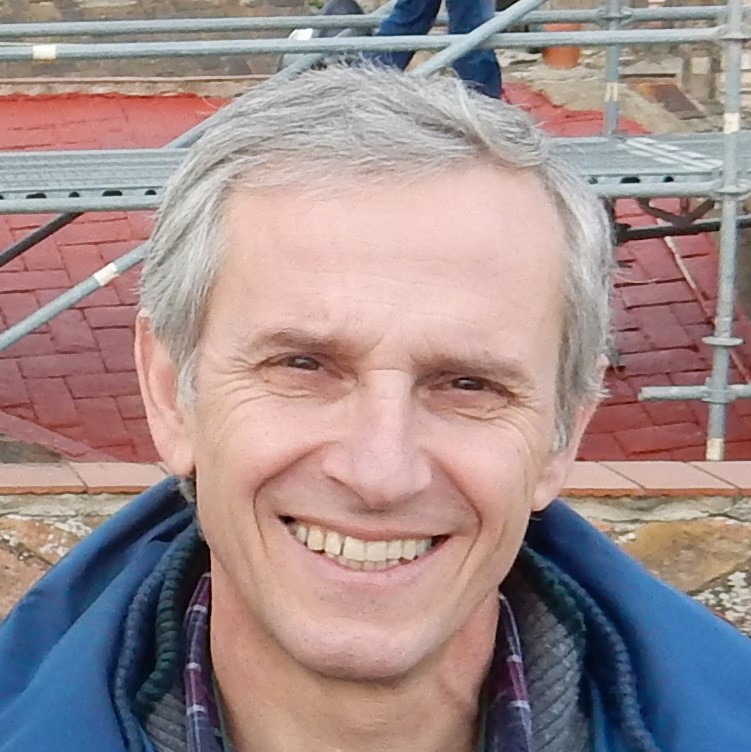 |  | 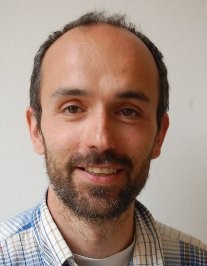 | 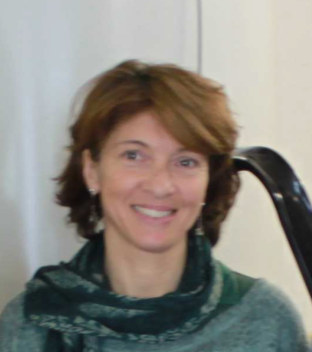 | 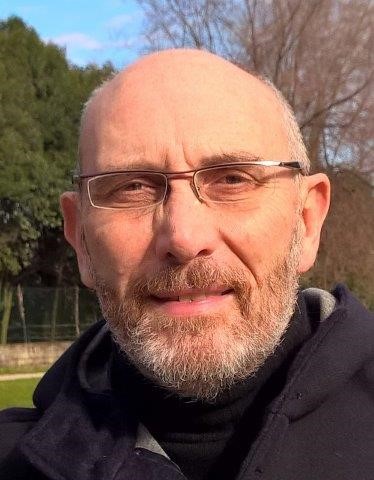 | 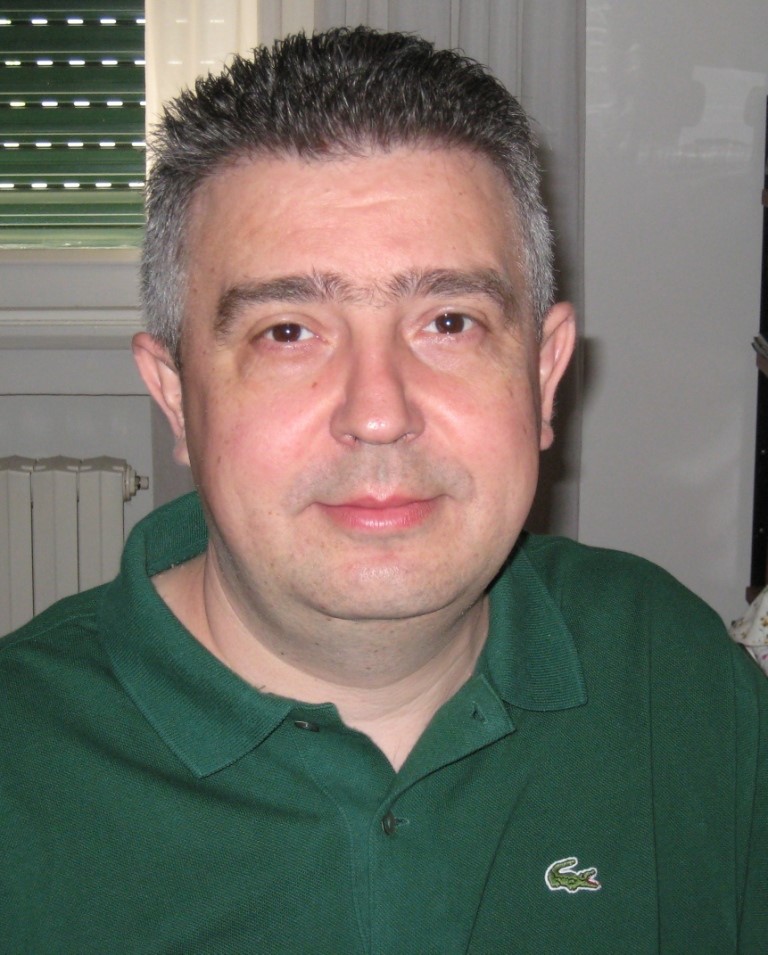 |
Stefano Mammi (stefano.mammi@unipd.it); Roberto Battistutta (roberto.battistutta@unipd.it); Massimo Bellanda (massimo.bellanda@unipd.it);
Elisabetta Schievano (elisabetta.schievano@unipd.it); Andrea Calderan (andrea.calderan@unipd.it); Paolo Ruzza (paolo.ruzza@unipd.it); Gabriele Giachin (gabriele.giachin@unipd.it)
The research of the Biomolecular Structure Group is addressed to the study of peptides and proteins. We investigate their chemical and structural properties with the goal to elucidate the molecular mechanisms at the basis of their biological activity in natural processes. We then apply this knowledge to try to modify the properties of selected targets (for instance for biotechnological applications) or to correct them when correlated to pathological states. The main experimental techniques we employ are multidimensional NMR and protein crystallography. Another focus of our research is the application of NMR, in combination with multivariate statistical analysis, to the metabolomic study of complex matrices such as food extracts and biological fluids. The applications range from the development of new methods to the traceability of food products to the development of new analytical tools to establish the in vivo effects of exogenous substances. Our main research lines are the following:
- Structural, functional and inhibition studies of oncogenic protein kinases CK2 and CDK2;
- Structural and functional characterization of SulP/SLC26 anion transporters;
- Enzyme engineering for industrial applications;
- Structure and interactions of proteins involved in the peculiar redox metabolism of pathogenic organisms;
- Fragment-based drug discovery by NMR and crystallography;
- Metabolomic analysis of food extracts and biological fluids;
- Traceability of foodstuff;
- Synthesis and characterization of peptide and peptidomimetics.
- Molecular architecture and the structural basis for anion interaction in prestin and SLC26 transporters, Nat. Comm., 2014, 5, 3622-35.
- Objective Definition of Monofloral and Polyfloral Honeys Based on NMR Metabolomic Profiling, J. Agric. Food Chem., 2016, 64, 3645-3652.
- Interactions of GFAP with ceftriaxone and phenytoin: SRCD and molecular docking and dynamic simulation, Biochim. Biophys. Acta-Gen. Subj., 2016, 1860, 2239-2248.
- NMR Quantification of Carbohydrates in Complex Mixtures. A Challenge on Honey, Anal. Chem., 2017, 89, 13405-13414.
- Polyamine-Based Thiols in Trypanosomatids: Evolution, Protein Structural Adaptations, and Biological Functions. Antioxid. Redox Signal., 2018, 28, 463– 486.
4. BioOrganic Chemistry Group
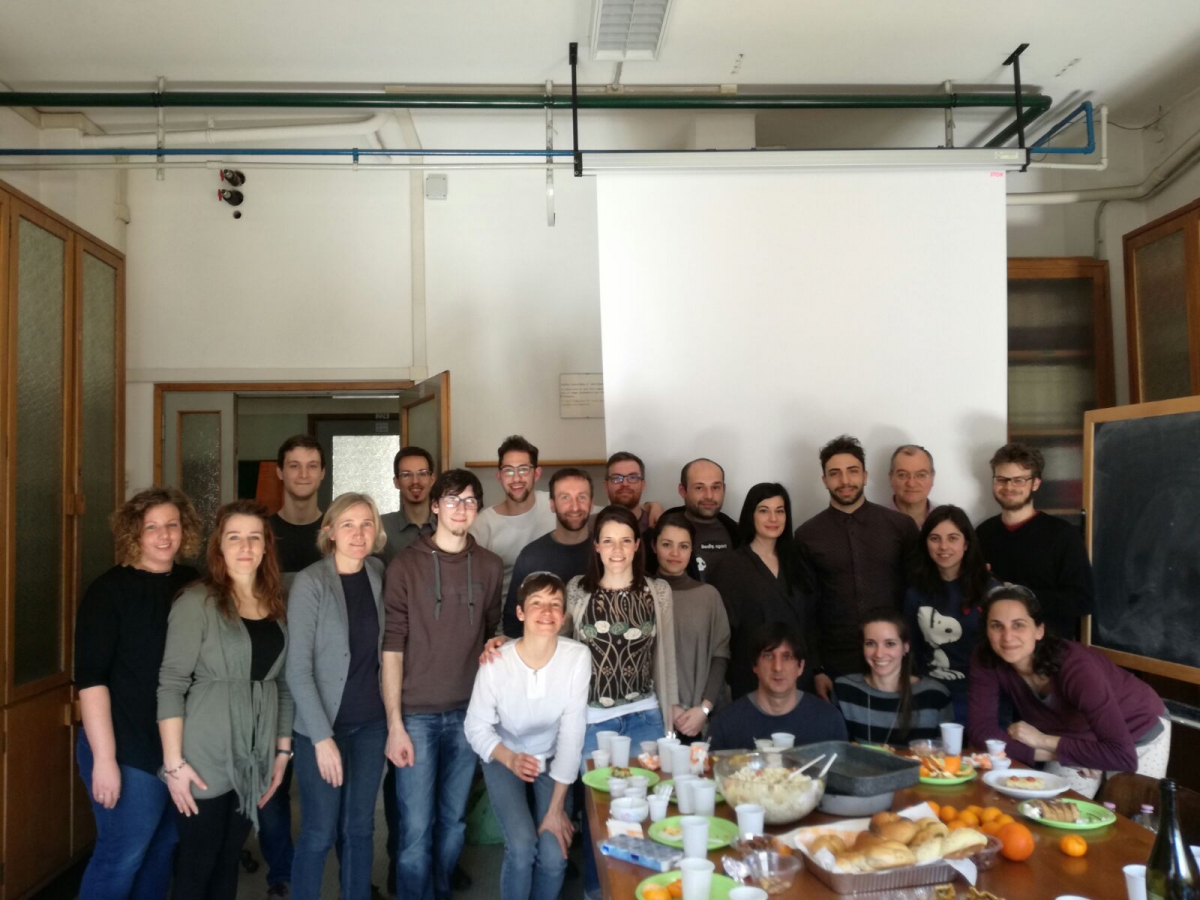
Dr. Barbara Biondi (barbara.biondi@unipd.it); Prof. Marta De Zotti (marta.dezotti@unipd.it); Prof. Fernando Formaggio (fernando.formaggio@unipd.it); Prof. Marina Gobbo (marina.gobbo@unipd.it); Prof. Alessandro Moretto (alessandro.moretto.1@unipd.it); Prof. Cristina Peggion (cristina.peggion@unipd.it)
The Bio Organic Chemistry group synthesizes and studies peptides of different origin and particularly those containing Cα,α-dialkyl amino acids.
The group is engaged in the following research lines:
- synthesis, conformation, mechanism of action and bioactivity (antibacterial and antitumor) of peptides and naturally-occurring peptaibiotics;
- antimicrobial photodynamic therapy;
- textiles functionalized with antibacterial peptides for biomedical applications;
- peptide nanotechnology: peptido-rotaxanes, peptide-decorated metal nanoparticles, self-assembled peptide polymers;
- synthesis and conformation of peptides with well-defined 3D-structures;
- peptide helices as rigid structural elements for spectroscopic studies and for electron transfer and photovoltaic applications.
- Protection against proteolysis of a cell targeting peptide on gold nanostructure, Nanoscale, 2021, 13, 10544-10554.
- Targeting Oncogenic Src Homology 2 Domain-Containing Phosphatase 2 (SHP2) by Inhibiting Its Protein-Protein Interactions, J. Med. Chem., 2021, 64, 15973-15990.
- Photoresponsive Prion-Mimic Foldamer to Induce Controlled Protein Aggregation, Angew. Chem. Int. Ed., 2021, 60, 5173-5178.
- Targeted Amino Acid Substitutions in a Trichoderma Peptaibol Confer Activity against Fungal Plant Pathogens and Protect Host Tissues from Botrytis cinerea Infection, Int. J. Mol. Sci., 2020, 21, art. N. 7521
- Sustainable, Site-Specific Linkage of Antimicrobial Peptides to Cotton Textiles, Macromol. Biosci., 2020, 20, art. N. 2000199.
updated April 26th, 2022
5. Electrocatalysis and Applied Electrochemistry
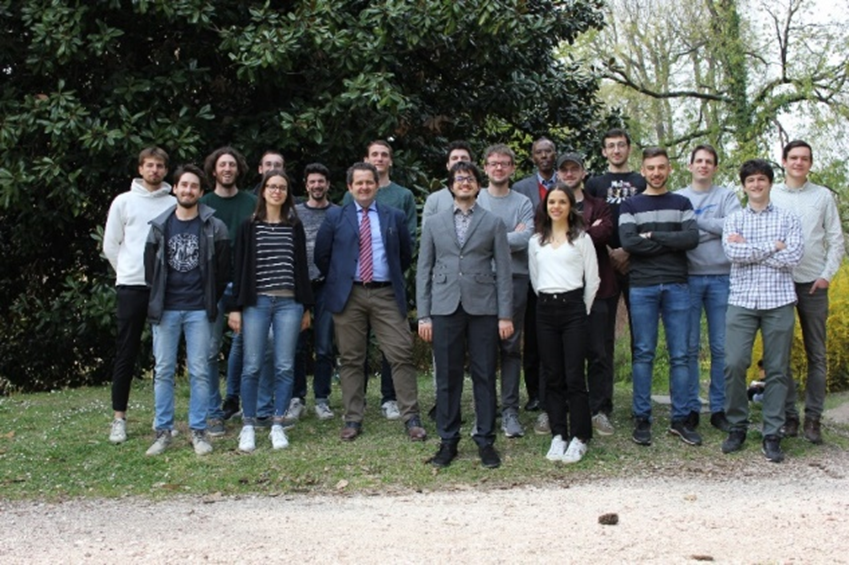
Prof. Abdirisak Ahmed Isse (abdirisak.ahmedisse@unipd.it); Prof. Christian Durante (christian.durante@unipd.it); Dr. Marco Fantin (marco.fantin@unipd.it)
The research group applies electrochemical methods to study chemical problems in various fields such as electrochemical surface treatment, (electro)catalysis, and environmental electrochemistry. The research activity is centered in molecular electrochemistry with particular attention to the study of mechanisms of electrochemical processes, the development of eco-friendly electrosynthesis and electrocatalytic materials and/or electrocatalytic processes. The main topics of research activity of the group are:
-Development of electrocatalytic materials
-Electrochemical activation of small molecules
-Electrochemical approaches to controlled radical polymerization
-Electrochemical surface treatment (electropolishing, electrodeposition)
Daniel, G.; Zhang, Y.; Lanzalaco, S.; Brombin, F.; Kosmala, T.; Granozzi, G.; Wang, A.; Brillas, E.; Sirés, I.; Durante, C. Chitosan-derived nitrogen-doped carbon electrocatalyst for a sustainable upgrade of oxygen reduction to hydrogen peroxide in UV-assisted electro-fenton water treatment. ACS Sustain. Chem. Eng. 2020, 8, 14425–14440.
- Lorandi, F.; Fantin, M.; Wang, Y.; Isse, A.A.; Gennaro, A.; Matyjaszewski, K. Atom transfer radical polymerization of acrylic and methacrylic acids: preparation of acidic polymers with various architectures, ACS Macro Letters, 2020, 9, 693-699.
- Mazzucato, M.; Daniel, G.; Mehmood, A.; Kosmala, T.; Granozzi, G.; Kucernak, A.; Durante, C. Effects of the induced micro- and mesoporosity on the single site density and turn over frequency of Fe-N-C carbon electrodes for the oxygen reduction reaction. Appl. Catal. B Environ. 2021, 291, 120068–120083.
- Grecchi, S.; Arnaboldi, S.; Isse, A.A.; D’Aloi, C.; Gennaro, A.; Mussini, P.R. Electrocatalytic reduction of bromothiophenes vs bromobenzenes on gold and silver electrodes: enhancement from S specific adsorption and modulation from substituent effects, Electrochim. Acta, 2022, 403, 139563
updated April 26th, 2022
6. EPR Spectroscopy
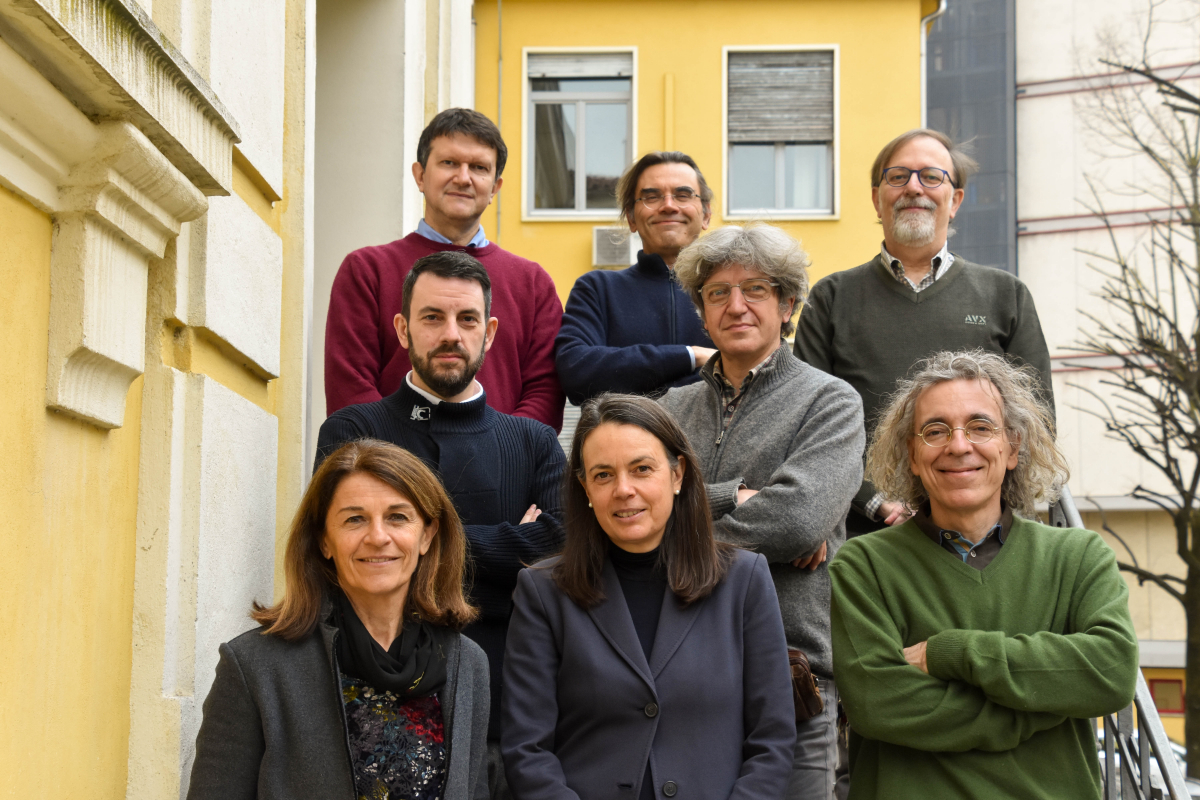
Prof. Donatella Carbonera (donatella.carbonera@unipd.it); Prof. Marilena Di Valentin (marilena.divalentin@unipd.it); Prof. Antonio Toffoletti (antonio.toffoletti@unipd.it); Prof. Lorenzo Franco (lorenzo.franco@unipd.it); Prof. Marco Ruzzi (marco.ruzzi@unipd.it); Dr. Alfonso Zoleo (alfonso.zoleo@unipd.it); Dr. Antonio Barbon (antonio.barbon@unipd.it); Dr. Marco Bortolus (marco.bortolus@unipd.it): Dr. Gabriele Stevanato (gabriele.stevanato@unipd.it).
The research activity of the group is focused on the development and application of Electron Paramagnetic Resonance (EPR) techniques to Material Science (graphene, metal nanoparticles, organic photovoltaics, cultural heritage materials), and Biology (natural and artificial photosynthetic systems, hydrogenases and bio-inspired analogs for the bio-production of hydrogen, protein dynamics as detected by spin labelling techniques).
The facilities of the EPR Laboratory include the following spectrometers:
- X/Q-band EPR with CW, pulsed, ENDOR, PELDOR and time-resolved accessories
- X-band EPR with CW, pulsed, ENDOR, and time-resolved accessories
- X-band CW-EPR for routine experiments
- X-band time-resolved EPR for analysis of light-induced processes
- Optically detected Magnetic Resonance (ODMR).
- UV-Vis.
We also have available an FPLC for protein purification
- Altering the exciton landscape by removal of specific chlorophylls in monomeric LHCII provides information on the sites of triplet formation and quenching by means of ODMR and EPR spectroscopies, BBA Bioenerg., 2021, 1862, 148481.
- Orientation-Selective and Frequency-Correlated Light-Induced Pulsed Dipolar Spectroscopy, J. Chem. Phys. Lett., 2021, 12, 3819 - 3826.
- Spin–Orbit Charge-Transfer Intersystem Crossing of Compact Naphthalenediimide-Carbazole Electron-Donor–Acceptor Triads, J. Phys. Chem. B, 2021, 125, 10813 - 10831.
- Understanding and controlling the efficiency of Au24M(SR)18 nanoclusters as singlet-oxygen photosensitizers, Chem. Sci., 2020, 11, 3427 - 3440.
- Quantification of Photophysical Processes in All-Polymer Bulk Heterojunction Solar Cells, Sol. RRL, 2020, 4, 2000181.
Updated May 6th, 2022
7. Innovative Materials and Processes for Advanced Environmental Clean Technologies (IMPACT)
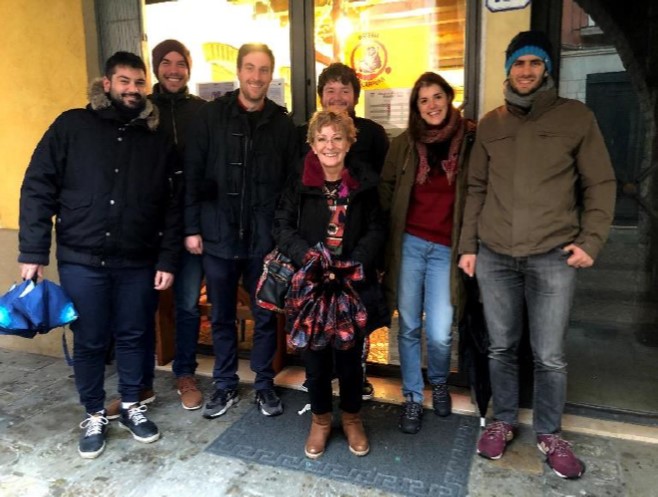
prof. Antonella Glisenti (antonella.glisenti@unipd.it)
Research activity focus: Design and realization of advanced functional materials and processes for sustainable development. Application fields that better inspire us for design, synthesis, optimization of Critical Raw Material-free catalysts and electrocatalysts:
1. Energy conversion and storage (Solid Oxide Fuel Cells, Solid Oxide Electrolysers)
2. Renewable fuel production by electrocatalysis (electrolysis and co-electrolysis) and catalysis (CO2 reduction)
3. Abatement of pollutants from automotive (Three Way Catalysts, Four Way Catalysts) and industrial exhausts; (2 European Projects on TWC and FWC: FP7 NEXT-GEN-CAT and H2020 PARTIAL PGMs).
A start up (www.efestoinnovation.it) has been created by ex-IMPACT membersgroup.
We were present in: EuropeanFuelCells 2019, EuropaCAT 2019, International Conference on Solid State Ionics 2019, 6th International Congress on Operando Spectroscopy 2018, CAPoC11 2018, 22nd Conference Solid Oxide Technologies: Fuel Cells (SOFC), Electrolysers (SOE) & Membrane Reactors (SOMR) 2018.
- CuO/La0.5Sr0.5CoO3 nanocomposites in TWC, Appl. Catal. B Environ., 2019, 255, Art 117753.
- Pulsed reactivity on LaCoO3-based perovskites: a comprehensive approach to elucidate the CO oxidation mechanism and the effect of dopants, Catal. Sci. Techn., 2019, 9, 2749.
- Rational Development of IT-SOFC Electrodes Based on the Nanofunctionalization of La0.6Sr0.4Ga0.3Fe0.7O3 with Oxides. PART 1: Cathodes by Means of Iron Oxide, ACS Appl. Energy Mat., 2018, 1, 6840.
- PGM-free CuO/LaCoO3 nanocomposites: New opportunities for TWC application, Appl. Catal. B Environ., 2018, 227, 446.
updated 30th January 2020
8. Interfaces & Nanomaterials for Catalysis (INCAT)
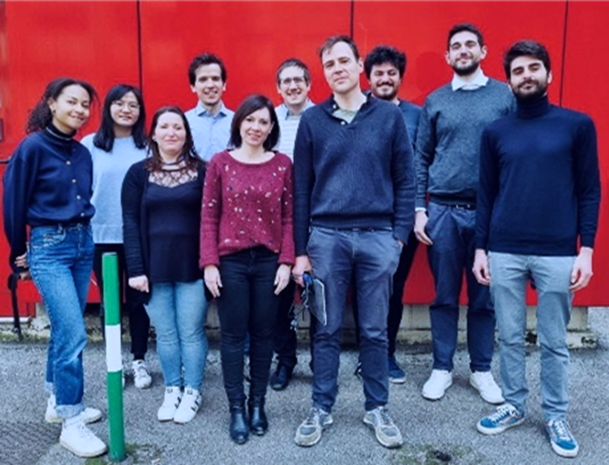
Prof. Stefano Agnoli (stefano.agnoli@unipd.it); Prof. Laura Calvillo (laura.calvillolamana@unipd.it); Dr. Francesca Arcudi (francesca.arcudi@unipd.it); Dr. Mattia Cattelan (mattia.cattelan@unipd.it);
The Interfaces & Nanomaterials for Catalysis (INCAT) group focuses on the rational design of innovative materials for applications in sustainable electro- thermo- and photo- catalysis. We follow a knowledge-driven approach based on the combination of advanced synthesis methods (chemical vapor deposition, solvothermal synthesis, aerosol process etc.) and sophisticated characterization techniques (electron spectroscopies, scanning probe microscopies) and operando studies (EC-STM, EXAFS, Raman spectroscopy).Our main research activities cover the study of emerging 2D materials, multiscale organic-inorganic hybrids (MOFs/COFs, functionalized carbon nanomaterials), and engineered single atom catalysts, for hydrogen electrochemical production, fine chemical synthesis through Green Chemistry methods, and CO2 valorisation.
- Atom-by-atom identification of catalytic active sites in operando conditions by quantitative noise detection, Joule, 2022, 6, 617 - 635.
- Operando visualization of the hydrogen evolution reaction with atomic-scale precision at different metal–graphene interfaces, Nature Catalysis, 2021, 4, 850 - 859.
- Copper single-atoms embedded in 2D graphitic carbon nitride for the CO2 reduction, npj 2D Materials and Applications, 2021, 5, 1 - 10.
- Hybridization of Molecular and Graphene Materials for CO2 Photocatalytic Reduction with Selectivity Control, Journal of the American Chemical Society, 2021, 143, 8414-8425.
- Palladium nanoparticles supported on graphene acid: A stable and eco-friendly bifunctional C–C homo-and cross-coupling catalyst, Green Chemistry, 2019, 21, 5238-5247.
updated April 26th , 2022
9. Laser Spectroscopy and Nanophotonics
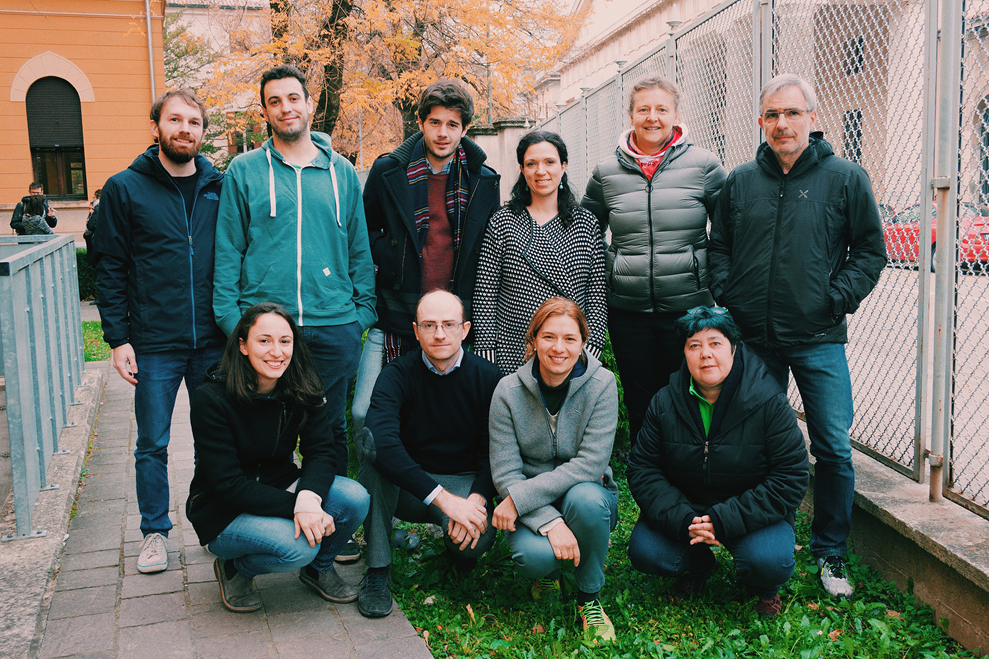
Elisabetta Collini (elisabetta.collini@unipd.it); Camilla Ferrante (camilla.ferrante@unipd.it); Danilo Pedron (danilo.pedron@unipd.it); Roberto Pilot (roberto.pilot@unipd.it); Raffaella Signorini (raffaella.signorini@unipd.it).
The group has a long-standing experience in the investigation of inter- and intra-molecular charge and energy transfer processes, ultrafast coherent and incoherent dynamics, and nonlinear optical response in complex systems like molecular crystals, molecular aggregates, metal and semiconductor nanoparticles. To this end we have developed experimental set-ups for time and frequency resolved optical spectroscopy experiments: 2D-electronic spectroscopy with fs resolution, transient absorption in the fs and ps time domain, time resolved fluorescence microscopy: FLIM and FCS, Raman and SERS spectroscopy, multiphoton absorption through Z-scan and fluorescence excitation experiments.
- E. Collini,2D Electronic Spectroscopic Techniques for Quantum Technology Applications, J. Phys. Chem. C, 2021, 125, 3096-13108
- V. Zani, D. Pedron, R. Pilot, and R. Signorini, Contactless Temperature Sensing at the Microscale Based on Titanium Dioxide Raman Thermometry, Biosensors, 2021, 11, 102.
- N. Peruffo, E. Collini et al., Selective switching of multiple plexcitons in colloidal materials: directing the energy flow at the nanoscale. Nanoscale, 2021, 13, 6005-6015.
- V. Weber , L. Brigo, G. Brusatin, G. Mattei, D Pedron, R. Pilot and R. Signorini, Hybrid Sol-Gel Surface-Enhanced Raman Sensor for Xylene Detection in Solution, Sensors, 2021, 21, 7912.
- M. Righetto, A. Privitera, I. Fortunati, D. Mosconi, M. Zerbetto, M. L. Curri, M. Corricelli, A. Moretto, S. Agnoli, L. Franco, R. Bozio, C. Ferrante, Spectroscopic insights into carbon dot systems, J. Phys. Chem. Lett., 2017, 8, 2236-2242
updated April 26th, 2022
10. Macromolecular and Organic Chemistry (MOC)
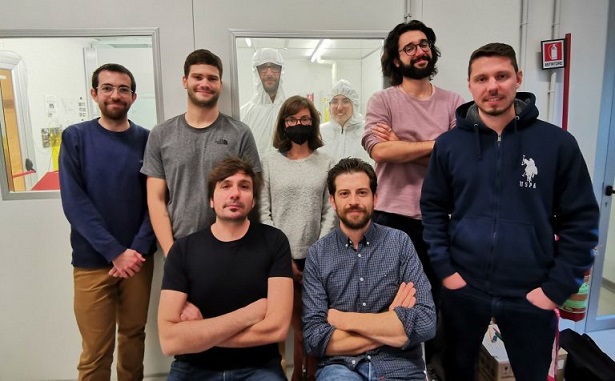
Prof Edmondo Benetti (edmondo.benetti@unipd.it), Dr. Francesca Lorandi (francesca.lorandi@unipd.it), Dr. Cristian Pezzato (cristian.pezzato@unipd.it)
11. Molecular Electrochemistry and Nanosystems
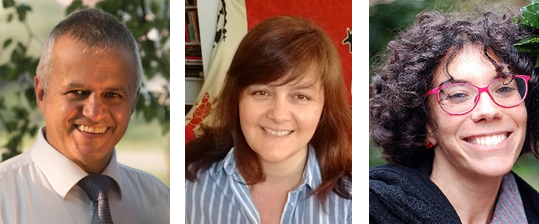 |
Flavio Maran (flavio.maran@unipd.it); Sabrina Antonello (sabrina.antonello@unipd.it); Sara Bonacchi (sara.bonacchi@unipd.it), Abhijit Nag (abhijit.nag@unipd.it)
The M.E.N. Group focuses on molecular aspects of electrochemical reactions and nanosystems, from both fundamental and applied viewpoints. Specific research topics include:
- Electron transfer through molecular bridges and interfaces;
- Dissociative electron transfer;
- Monolayer-protected clusters: electrochemical, optical and magnetic properties, redox catalysis, drug-delivery systems;
- Electrochemical sensors for cancer biomarkers and volatile chemicals;
- Self-assembled monolayers of conformationally constrained peptides.
The M.E.N. group is equipped with state-of-the-art electrochemical instrumentations, including electrogenerated chemiluminescence and SECM, STM and AFM, PM-IRRAS and UV-visible spectrometers, HPLC.
- Electrocrystallization of Monolayer Protected Gold Clusters: Opening the Door to Quality, Quantity and New Structures, J. Am. Chem. Soc., 2017, 139, 4168-4175.
- Magnetic Ordering in Gold Nanoclusters, ACS Omega, 2017, 2, 2607-2917.
- From Blue to Green: Fine Tuning of Photoluminescence and Electrochemiluminescence in Bifunctional Organic Dyes, J. Am. Chem. Soc., 2017, 139, 2060-2069.
- Molecular Electrochemistry of Monolayer-Protected Clusters, Curr. Opinion Electrochem., 2017, 2, 18-25.
- A Magnetic Look into the Protecting layer of Au25 Clusters, Chem. Sci., 2016, 7, 6910-6918.
12. Molecular Materials & Modeling (M3)
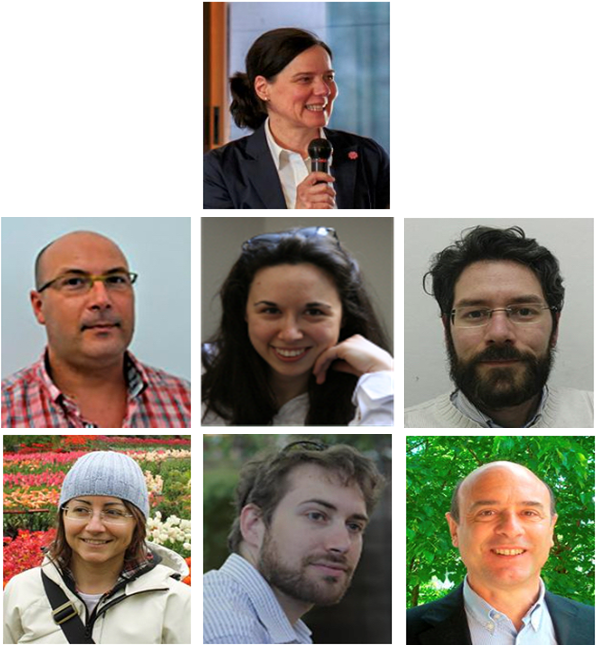
Lidia Armelao (lidia.armelao@unipd.it); Gregorio Bottaro (gregorio.bottaro@unipd.it); Silvia Carlotto (silvia.carlotto@unipd.it); Daniel Forrer (daniel.forrer@unipd.it); Marta Maria Natile (martamaria.natile@unipd.it); Marzio Rancan (marzio.rancan@unipd.it); Alessandro Soncini (alessandro.soncini@unipd.it); Andrea Vittadini (andrea.vittadini@unipd.it)
The Molecular Materials & Modeling (M3) Group is composed of researchers belonging to the Department of Chemical Sciences of the University of Padova and of the Institute for Condensed Matter Chemistry and Technologies for Energy (ICMATE) of the National Research Council (CNR). The group activity is currently focusing on the design, synthesis, characterization, and modeling of supramolecular structures and of nanocrystalline inorganic solids with applications in energy, nanomedicine, sensing, and catalysis. Innovative molecular systems and inorganic nanostructures are obtained through strategies of molecular self-assembly by exploiting non-covalent, selective, and directional interactions. All the systems are studied and characterized with advanced experimental techniques and computational methods.
- Adaptive helicity and chiral recognition in bright europium quadruple-stranded helicates induced by host-guest interaction. Cell Rep. Phys. Sci. 2022, 3, 100692.
- Chromium doped ZnGa2O4 thin films: an X-ray Absorption Near Edge Structure (XANES) and X-ray Excited Optical Luminesce (XEOL) study. Appl. Surf. Sci. 2022, 577, 151896.
- Spatial and temporal resolution of luminescence quenching in small up-conversion nanocrystals. ACS Appl. Mater. Interfaces 2022, 14, 11883−11894.
- Nature of the ligand-centered triplet state in Gd3+ β-diketonate complexes as revealed by time-resolved EPR spectroscopy and DFT calculations. Inorg. Chem. 2021, 60,15141−15150.
- Digging Ti interstitials at the r-TiO2 (110) surface: mechanism of porphyrin Ti sequestration by iminic N nucleophilic attack. Appl. Surf. Sci. 2021, 564, 150403.
- Luminescent thermometers: from a library of europium (III) β-diketonates to a general model for predicting the thermometric behavior of europium-based coordination systems. ChemPhotoChem 2020, 4, 674−684.
Updated April 26th, 2022
13. Molecular Recognition and Catalysis
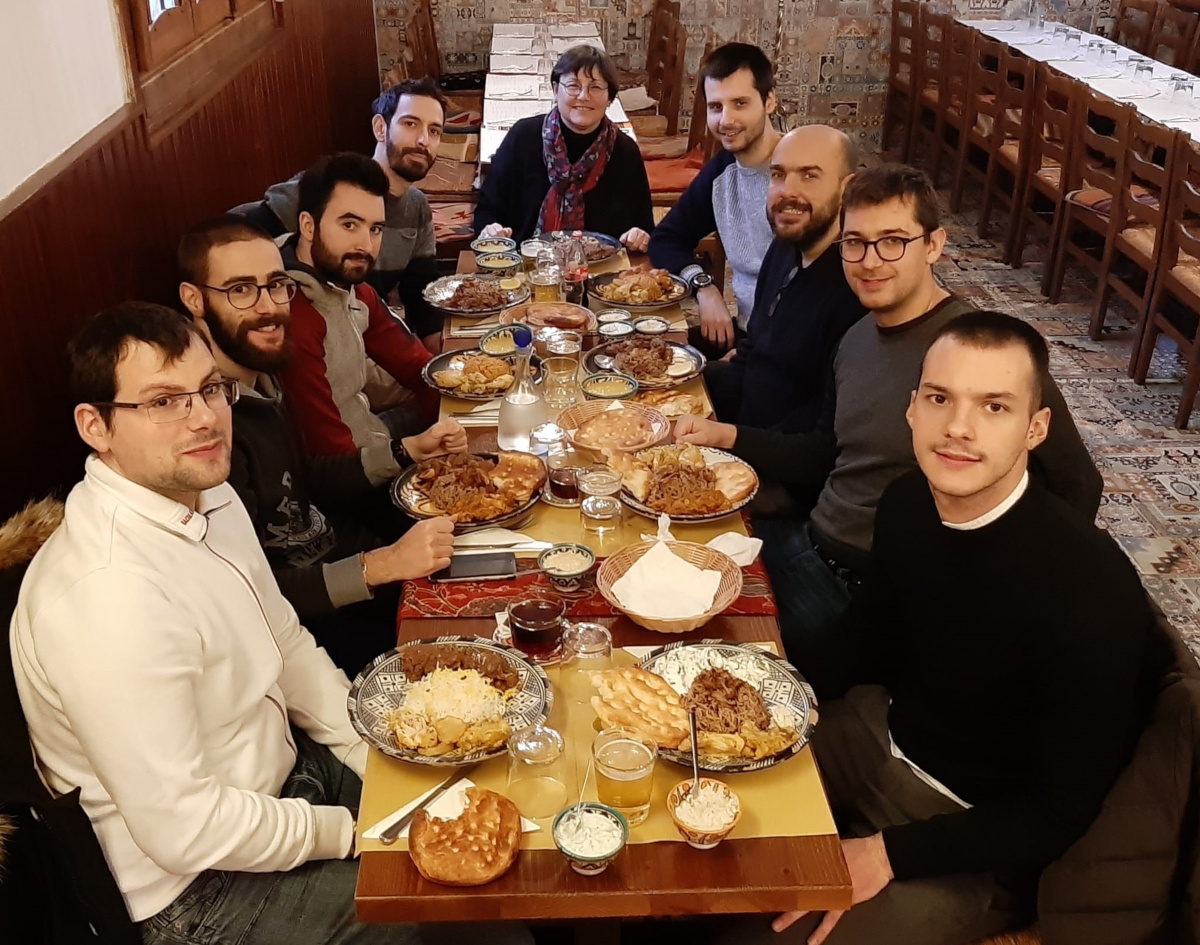
Giulia Licini (giulia.licini@unipd.it); Cristiano Zonta (cristiano.zonta@unipd.it); Manuel Orlandi ( manuel.orlandi@unipd.it).
The Molecular Recognition and Catalysis group is interested in all aspects of selective catalytic transformations and molecular recognition. Our research is centered on the design, discovery, and study of new catalytic systems that catalyze fundamentally useful organic reactions. These include, in particular Lewis Acid catalysis, oxidations, and new stereoselective transformations. In addition, we apply the tools of physical-organic chemistry tools to gain insights into the transition structure geometries and molecular recognition events that control reactivity and selectivity.
The following topics are currently under investigation in our laboratories:
1. Activation of Small Molecules (CO2, O2, H2O2); 2. Mimics of Physiologically Important Metallo-Enzymes (haloperoxidases, ligninperoxidases); 3. New Approaches to Catalyst Design and Recycling in Green Chemistry; 4. Self-Assembled Molecular Cages and Catalysis in Confined Spaces; 5. Probes for Enantiomeric Excess Determination; 6. Development of New Stereoselective C-C Bond Forming Reactions.
- Concentration-Independent Stereodynamic g-Probe for Chiroptical Enantiomeric Excess Determination, J. Am. Chem. Soc., 2017, 139, 15616–15619, DOI: 10.1021/jacs.7b09469.
- Triggering Assembly and Disassembly of a Supramolecular Cage, J. Am. Chem. Soc., 2017, 139, 6456–6460 DOI: 10.1021/jacs.7b02341.
- Vanadium(V) Catalysts with High Activity for the Coupling of Epoxides and CO2: Characterization of a Putative Catalytic Intermediate, ACS Catalysis, 2017, 7, 2367–2373, DOI: 10.1021/acscatal.7b00109.
– Efficient Vanadium-Catalyzed Aerobic C−C Bond Oxidative Cleavage of Vicinal Diols, Adv. Synth. Catal., 2018, 360, 3286-3296. DOI: 10.1002/adsc.201800050.
– A Diastereodynamic Probe Transducing Molecular Length into Chiroptical Readout, J. Am. Chem. Soc., 2019, 141, 11963-11969. DOI: 10.1021/jacs.9b04151.
updated 17th June 2020
14. Multi-functional Nanomaterials
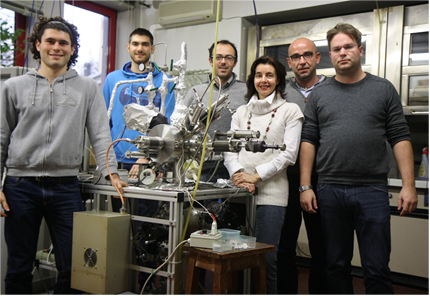 |
Chiara Maccato (chiara.maccato@unipd.it); Alberto Gasparotto
(alberto.gasparotto@unipd.it); Davide Barreca (davide.barreca@unipd.it).
The Multi-functional Nanomaterials Group has an internationally recognized know-how in the fabrication of inorganic nanoarchitectures (thin films, supported nanoparticles, nanowires, nanoplatelets,…) by chemical vapor deposition (CVD), plasma enhanced-CVD, and radio frequency-sputtering. Attention is also devoted to the synthesis of novel molecular precursors for CVD and PE-CVD processes.
The developed nanosystems are deeply characterized to unravel structure-property relationships and investigated for sustainable end-uses, encompassing photo-activated applications (H2 production by photocatalysis and photoelectrochemical water splitting, air/water purification, self-cleaning and anti-fogging systems), molecular detection of flammable/toxic gases, but also anodes for Li-ion batteries and magnetic materials.
- Surface functionalization of nanostructured Fe2O3 polymorphs: from design to light-activated applications, ACS Appl. Mater. Interfaces, 2013, 5, 7130-7138.
- Enhanced hydrogen production by photoreforming of renewable oxygenates through nanostructured Fe2O3 polymorphs, Adv. Funct. Mater., 2014, 24, 372-378.
- Pt-functionalized Fe2O3 Photoanodes for Solar Water Splitting: the Role of Hematite Nano-organization and Platinum Redox State, Phys. Chem. Chem. Phys., 2015, 17, 12899-12907.
- Advances in photocatalytic NOX abatement through the use of Fe2O3/TiO2 nanocomposites, RSC Adv., 2016, 6, 74878-74885.
- Vapor phase fabrication of nanoheterostructures based on ZnO for photoelectrochemical water splitting, Adv. Mater. Interfaces, 2017, 4, 1700161-1 1700161-9.
15. Nano & Molecular Catalysis
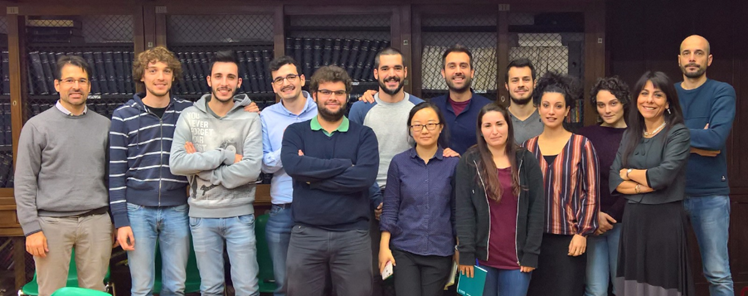 |
Marcella Bonchio (marcella.bonchio@unipd.it); Mauro Carraro
(mauro.carraro@unipd.it); Andrea Sartorel (andrea.sartorel@unipd.it); Luca
Dell’Amico (luca.dellamico@unipd.it); Giacomo Saielli (giacomo.saielli@unipd.it); Paolo Costa (paolo.costa@unipd.it); Francesco Rigodanza (francesco.rigodanza@unipd.it); Daniele Mazzarella (daniele.mazzarella@unipd.it); Giulio Goti (giulio.goti@unipd.it); Katy Elizabeth Medrano Uribe (katyelizabeth.medranouribe@unipd.it);
The group has established a highly interdisciplinary activity on the study of novel bio-inspired catalytic systems, molecular materials and functional hybrid architectures. Main topics include: (i) artificial photosynthesis: development of multi-redox routines powered by light irradiation for water splitting, CO2 fixation and stereoselective light-driven reactions for the synthesis of biologically relevant molecules with application to flow photochemistry; (ii) design of synthetic enzymes (synzymes), bio-conjugate nanomaterials and hybrid membranes for the interaction with diverse biological targets involved in ROS-related diseases, with applications in catalysis and nanomedicine; (iii) computational modeling in collaboration with ITM-CNR: DFT calculations of spectroscopic properties of organic and organometallic systems and MD simulations of ionic liquids and ionic liquid crystals.
- Hydrogen Evolution by FeIII Molecular Electrocatalysts Interconverting between Mono and Di-Nuclear Structures in Aqueous Phase, ChemSusChem, 2017, 10, 4430–4435.
- Photo-assisted water oxidation by high-nuclearity cobalt-oxo cores: tracing the catalyst fate during oxygen evolution turnover, Green Chem., 2017, 19, 2416-2426.
- Merged Heme and Non-Heme Manganese Cofactors for a Dual Antioxidant Surveillance in Photosynthetic Organisms, ACS Catal., 2017, 7, 1971-1976.
- Tuning Iridium Photocatalysts and Light Irradiation for Enhanced CO2 reduction, ACS Catal., 2017, 7, 154-160.
- Dynamic Anti-Fouling of Catalytic Pores Armed with Oxygenic Polyoxometalates, Adv. Mater. Interfaces, 2015, 2, 1500034-1500034.
16. Nanostructures & (Bio)molecules Modeling
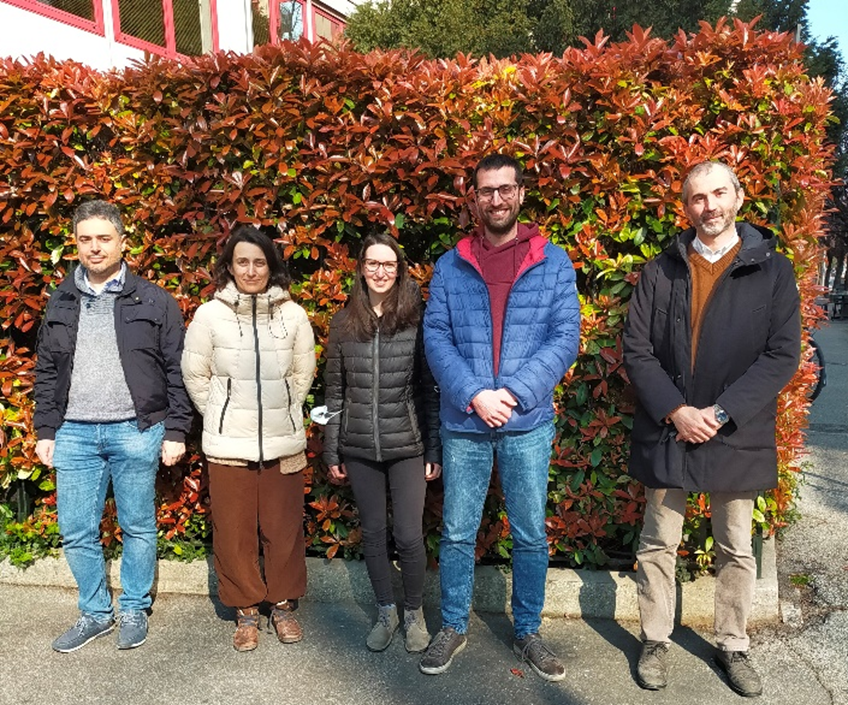
Stefano Corni (stefano.corni@unipd.it); Agostino Migliore (agostino.migliore@unipd.it)
The group develops and applies multiscale computational methods to describe hybrid systems, such as organic and biological molecules interacting with inorganic nanoparticles. The methods used range from ab initio atomistic calculations (also on quantum computers) and classical molecular dynamics to classical and quantum electrodynamics. The main research topics are:
-ultrafast spectroscopy and optical properties of molecules close to plasmonic nanostructures & in solution.
-the quantum nature of plasmonics excitations at the nanoscale.
-charge and energy transfer in (bio)molecules and in nanoscale structures
-the interactions of inorganic surfaces and nanoparticles with proteins.
The group is currently funded by EU H2020 and HE projects in which light-biomolecule interactions play a major role.
- Strong coupling between localized surface plasmons and molecules by coupled cluster theory, Nano Letters, 2021, 21, 6664-6670
- The physical origin of a photon-number parity effect in cavity quantum electrodynamics, Results in Physics, 2021, 30, 104690
- Charge transfer between [4Fe4S] proteins and DNA is unidirectional. Implications for biomolecular signaling, Chem, 2019, 5, 122-137
- Manipulating azobenzene photoisomerization through strong light–molecule coupling, Nature Communications, 2018, 9, 4688-9
- How to Identify Plasmons from the Optical Response of Nanostructures, ACS Nano, 2017, 11, 7321–7335.
updated April 26th, 2022
17. Nanostructures & Optics
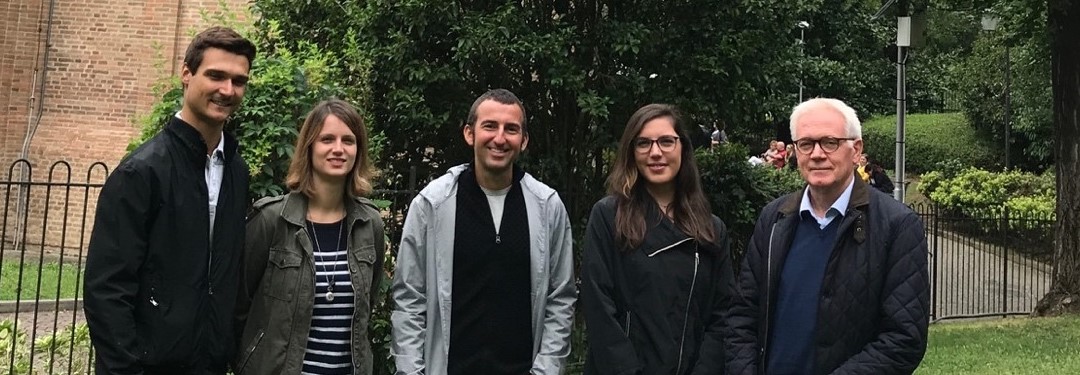
Prof. Moreno Meneghetti (moreno.meneghetti@unipd.it); dr. Lucio Litti (lucio.litti@unipd.it)
Research activities at NOL are on the synthesis, characterization, modelling and applications of nanostructures in nanobiotechnology and related fields and for new nanomaterials for solar energy conversion (photovoltaic and thermal) and cultural heritage. Nanostructures are usually obtained by laser ablation of bulk solids under solvents. Plasmonic properties of metal nanoparticles are exploited in particular for the SERS (surface enhanced Raman scattering) effect, whereas the magnetic properties for magnetophoresis. Finite element based simulations are used to model the optical responses of complex nanostructured assemblies. For the nanobiotechnology field the SERS technique is used for applications like tumor cell targeting and identification, functionalizing plasmonic and magneto-plasmonic nanostructures with antibodies and engineered peptides. Nanobiotechnology, but also environmental applications are developed also using µfluidic devices to be integrated in new portable sensor technologies. Raman and SERS nanostructures are exploited also in cultural heritage studies for the identification of pigments, dyes, and other organic materials present in artworks.
- Predictions on the SERS enhancement factor of gold nanosphere aggregate samples, Physical Chemistry Chemical Physics, 2019, 21, 15515 – 15522.
- A surface enhanced Raman scattering based colloid nanosensor for developing therapeutic drug monitoring, Journal of Colloid and Interface Science, 2019, 533, 621 – 626.
- Safe core-satellite magneto-plasmonic nanostructures for efficient targeting and photothermal treatment of tumor cells, Nanoscale, 2018, 10, 976–984.
- Enhanced EGFR Targeting Activity of Plasmonic Nanostructures with Engineered GE11 Peptide, Adv. Healthcare Mater., 2017, 6, 1700596.
- High-Quality, Ligands-Free, Mixed-Halide Perovskite Nanocrystals Inks for Optoelectronic applications, Advanced Energy Material, 2017, 7, 1601703.
updated 1st October 2019
18. Organic synthesis and materials
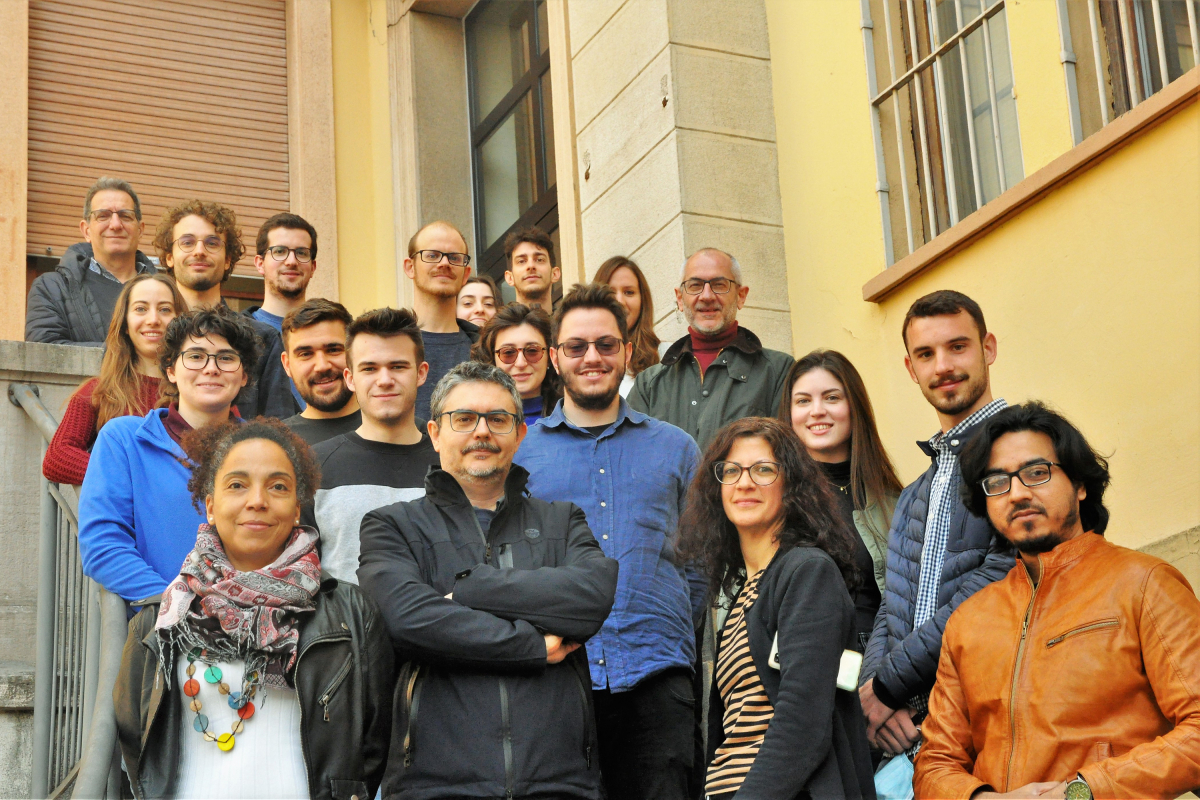
Prof. Tommaso Carofiglio (tommaso.carofiglio@unipd.it); Prof. Michele Maggini (michele.maggini@unipd.it); Prof. Ester Marotta (ester.marotta@unipd.it); Prof. Miriam Mba (miriam.mba@unipd.it); Prof. Enzo Menna (enzo.menna@unipd.it); Dr.Luka Đorđević (luka.dordevic@unipd.it)
Organic synthesis towards functional materials is at heart of the group, whose research focuses mainly on the chemical and plasma functionalization of carbon nanostructures for solar energy conversion, environmental and biomedical applications, the use of nanocellulose as a platform for bio-inspired functional materials and the preparation of functional supramolecular gels. We often use the microfluidics toolbox to study reactions or surface absorption kinetics, the controlled functionalization of nanosystems or the batch-to-flow transposition of active pharmaceutical ingredients of industrial interest. Main characterization techniques for organic synthesis and materials, including high-field and solid-state NMR, NIR absorption, TGA and DSC thermal analysis, AFM-STM at ambient conditions, benchtop flow reactors and cleanroom facilities are commonly accessed by the group components.
- Mild Microfluidic Approaches to Oxide Nanoparticles Synthesis, Chem.Eur.J., 2022, 28, e202103132
- Graphene-Based Scaffolds for Regenerative Medicine, Nanomaterials, 2021, 11, 404.
- Metal Cation Triggered Peptide Hydrogels and Their Application in Food Freshness Monitoring and Dye Adsorption, Gels, 2021, 7, 85
- Achieving selectivity in porphyrin bromination through a DoE-driven optimization under continuous flow conditions, J. Flow Chem., 2021, 11, 163-169.
- Comparative performance assessment of plasma reactors for the treatment of PFOA; reactor design, kinetics, mineralization and energy yield. Chem. Eng. J., 2020, 382, 123031.
Updated: April 8th, 2022
19. Physical Chemistry of Materials
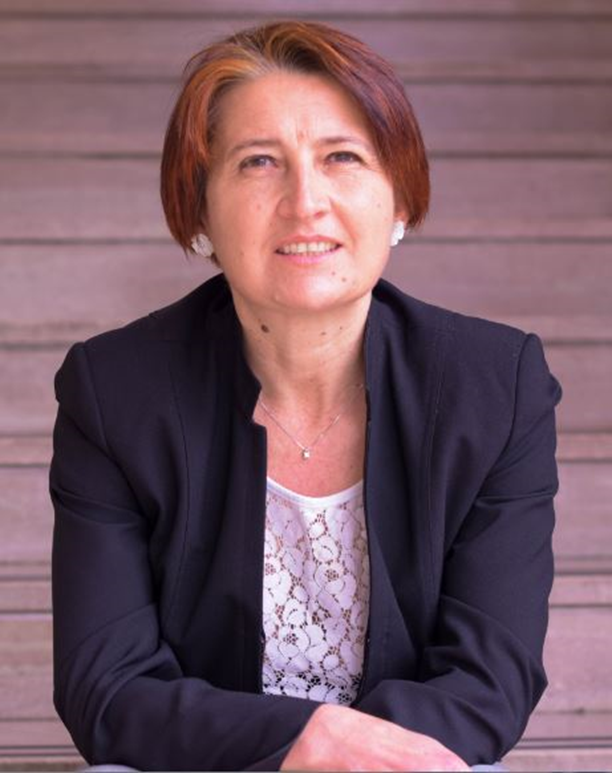
Prof. Fosca Conti (fosca.conti@unipd.it)
The Physical Chemistry of Materials group is oriented to international collaborations, especially with European and Asian institutions. The research focuses on the characterization of materials. Two main classes of chemical systems are considered:
- Materials for renewable energies and circular economy,
- Materials for microelectronics and artificial intelligence.
Physical-chemical properties of electro and/or photoactive molecular systems are investigated to suggest innovative devices to support green and sustainable developments and advanced and digitalized systems. Research topics include dynamics of chemical reaction networks, stress and aging effects, heat and mass transfer processes, interfacial and bulk mechanisms, biomaterials with algae and fungi utilization.
- Formic acid and formate salts for chemical vapour deposition of copper on glass substrates at atmospheric pressure, New Journal of Chemistry, 2021, 45, 20133-20139.
- Capture, storage and utilization of carbon dioxide by microalgae and production of biomaterials, Environmental and Climate Technologies, 2021, 25, 574-586.
- Die-Attach Bonding with Etched Micro Brass Metal Pigment Flakes for High-Power Electronics Packaging, ACS Applied Electronic Materials, 2021, 3, 4587-4603.
- Electrical Conductivity and Water Effects in Phosphoric Acid Solutions for Doping of Membranes in Polymer Electrolyte Fuel Cells, Environmental and Climate Technologies, 2021, 25, 467-478.
- Thermomechanical stress in GaN-LEDs soldered onto Cu substrates studied using finite element method and Raman spectroscopy, Journal of Raman Spectroscopy, 2020, 51, 2083-2094.
updated April 26th, 2022
20. Physical chemistry of nano and organometallic materials
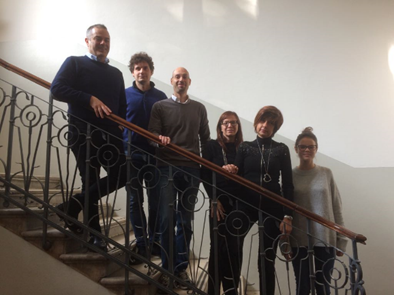 |
Saverio Santi (saverio.santi@unipd.it); Vincenzo Amendola (vincenzo.amendola@unipd.it)
PHYNOM members investigate the synthesis, properties and applications of nano and organometallic materials. PHYNOM is organized in two units.
The research of the Physical Organometallic Chemistry unit is aimed at the spectroelectrochemical study of the optical and redox properties of ad hoc synthetized (multi)ferrocenyl systems in which the metal-to-metal charge transfer is mediated by different organic backbones, such as peptides, aromatic polycycles and photochromic molecules.
The Laser Assisted Synthesis and Plasmonics unit focuses on laser generation of colloids to produce plasmonic and other multifunctional nanoparticles for photonics, sensor science, nanomedicine, catalysis and related fields. Mechanistic aspects of laser synthesis in liquids, which include laser ablation, laser fragmentation and laser melting, are also investigated.
- A quarter-century of nanoparticle generation by lasers in liquids: Where are we now, and what’s next?, J. Coll. Interf. Sci., 2017, 489, 1-2.
- Benzodithiophene and Benzotrithiophene as π-Cores for Two- and Three-Blade Propeller-Shaped Ferrocenyl-Based Conjugated Systems, Eur. J. Org. Chem., 2017, 5966-5974.
- Hydrogen-Bond-Assisted, Concentration-Dependent Molecular Dimerization of Ferrocenyl Hydantoins, Organometallics, 2017, 36, 2190-2197.
- Surface plasmon resonance in gold nanoparticles: a review, J. Phys.: Condens. Matter, 2017, 29, 203002.
- Enhanced Electrocatalytic Oxygen Evolution in Au–Fe Nanoalloys, Angew. Chem. Int. Ed., 2017, 56, 6589-6593.
21. Polymer Science
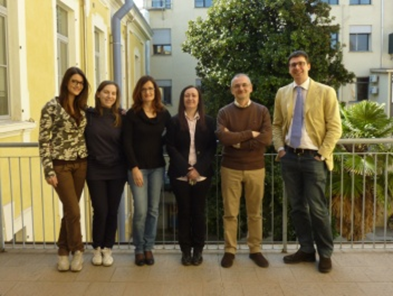 |
Carla Marega (carla.marega@unipd.it), Valerio Causin (valerio.causin@unipd.it)
In the labs of the Polymer Science group, different kinds of polymers and nanocomposites are studied, focusing particularly on their morphological and structural aspects (crystallization, lamellar morphology, polymorphism). The study, conducted on different scales, allows to obtain a global and complete picture of the considered materials. In fact, by wide angle X-ray diffraction (WAXD) the molecular structure, the type of crystalline cell and the dimensions of crystallites are studied, by small angle X-ray scattering (SAXS) and electron microscopy the lamellar morphology is investigated. From acquired diffractograms, in order to obtain the crystallinity degree, lamellar thicknesses and distributions, sophisticated computer software is used. Once characterization data have been obtained as a function of process or formulation parameters, the influence of these latter factors on polymer morphology and physical-mechanical properties is determined, with the purpose of obtaining a structure-property correlation to be used in the design of materials. The study is completed by thermal analysis (DSC and simultaneous DSC-TGA) and optical microscopy. Besides composite polymeric fibers are prepared via electrospinning, using as fillers: silver particles, clays, carbon nanotubes, carbon quantum dots, graphene and others.
- Nanocrystalline cellulose-fullerene: Novel conjugates, Carbohydrate Polymers, 2017, 164, 92-101.
- Neuronal commitment of human circulating multipotent cells by carbon nanotube-polymer scaffolds and biomimetic peptides, Nanomedicine, 2016,11,1929-1946.
- Synthesis and photochemical applications of processable polymers enclosing photoluminescent carbon quantum dots, ACS nano, 2015, 9, 4156-4164.
- Covalent functionalization enables good dispersion and anisotropic orientation of multi walled carbon nanotubes in a poly(L-lactic acid) electrospun nanofibrous matrix boosting neuronal differentiation, Carbon, 2015, 95, 725-730.
- Characteristics of TEMPO-oxidized cellulose fibril-based hydrogels induced by cationic ions and their properties, Cellulose, 2015, 22, 1993-2010.
22. Polymeric Materials for Advanced Catalysis
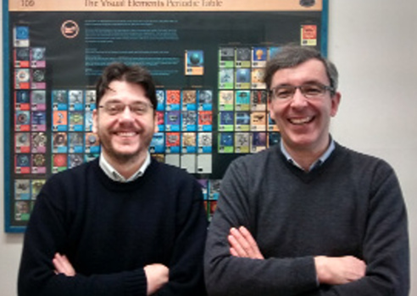 |
Marco Zecca (marco.zecca@unipd.it), Paolo Centomo (paolo.centomo@unipd.it)
The PoMACat investigates on cross-linked resins of different texture and on microgels as catalytic materials. Our research includes:
- tuning of hydro- and lipophilicity of polymeric materials to solvent or substrate compatibility in catalytic reactions;
- solid acid and bifunctional catalysts for the production and transformation of biorefinery platform substances;
- supported metal catalysts for the direct synthesis of hydrogen peroxide and oxidation of alcohols;
- development of “in-operando” methods of XAFS characterization of solid catalysts under (gas)-liquid-solid conditions.
- Influence of Metal Precursors and Reduction Protocols on the Chloride-Free Preparation of Catalysts for the Direct Synthesis of Hydrogen Peroxide without Selectivity Enhancers, ChemCatChem, 2016, 8, 1564–1574.
- The distinct role of the flexible polymer matrix in catalytic conversions over immobilised nanoparticles, RSC Advances, 2015, 5, 56181–56188.
- In Situ X-ray Absorption Fine Structure Spectroscopy of a Palladium Catalyst for the Direct Synthesis of Hydrogen Peroxide: Leaching and Reduction of the Metal Phase in the Presence of Bromide Ions, ChemCatChem, 2015, 7, 3712–3718.
- Dry- and swollen-state morphology of novel high surface area polymers, Microporous and Mesoporous Materials, 2014, 185, 26–29.
- Resin-Based Catalysts for the Hydrogenolysis of Glycerol to Propylene Glycol, Top. Catal., 2013, 56, 822–830.
23. Soft Matter Theory

Prof. Alberta Ferrarini (alberta.ferrarini@unipd.it); Dr. Francesco Avanzini (francesco.avanzini@unipd.it)
We use and develop statistical mechanical theories and computer simulations to reach a microscopic understanding of equilibrium and nonequilibrium properties of Soft Matter. Different methods and techniques, suitable to bridge different time and length scales, are employed and developed to address questions of interest to biophysics and materials science.
Research topics:
- Chirality propagation across length scales in self-assembling systems (polymers, nucleic acids, supramolecular aggregates);
- Elastic, rheological and thermodynamic properties of soft matter systems (lipid membranes, liquid crystals, polyelectrolytes, colloids, emulsions and gels);
- Nonequilibrium chemical processes and self-organization at different scales.
Publications:
Modeling of minimal systems based on ATP-Zn coordination for chemically fueled self-assembly, Phys. Chem. Chem. Phys. 2023, 25, 6102.
Spontaneous twisting of achiral nematic rods, Phys. Rev. Lett. 2023, 130, 1.
Helical inclusions in phospholipid membranes: lipid adaptation and chiral order, J. Phys. Chem. Lett. 2019, 10, 5629.
Circuit Theory for Chemical Reaction Networks, Phys. Rev. X 2023, 13, 021041
Deficiency, Kinetic Invertibility, and Catalysis in Stochastic Chemical Reaction Networks, J. Chem. Phys. 2023, 158, 204108
updated September 26th, 2023
24. Supramolecular Nanochemistry and Advanced NMR
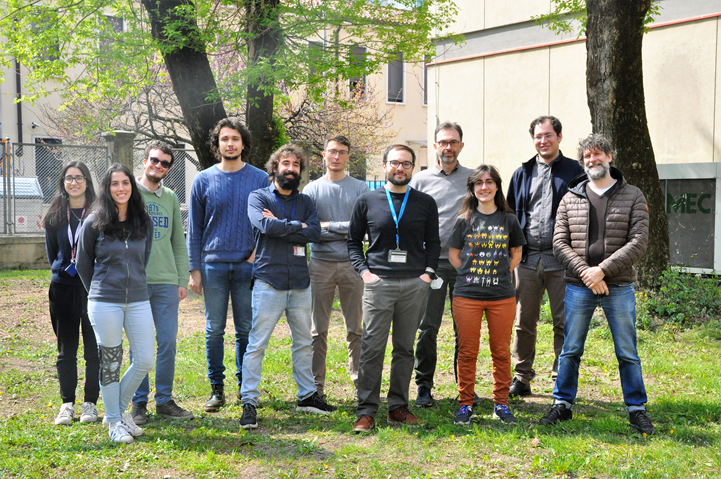
Fabrizio Mancin (fabrizio.mancin@unipd.it); Federico Rastrelli (federico.rastrelli@unipd.it)
The research activity of the group is focused on the development of self-organized nanosystems for molecular recognition and innovative NMR methods for their structural investigation. Monolayer-protected gold, silica and polylipoic nanoparticles are the key scaffolds of our systems. We demonstrated how self-organization of these nanoparticles can be exploited for cooperative catalysis, sensing and drug delivery. The most relevant application is the NMR detection of analytes: using tailor-made receptor nanoparticles and custom NMR sequences we demonstrated the possibility to extract the 1H spectrum of the target molecules from that of the whole mixture even at micromolar concentrations. Other fields explored include pH2 hyperpolarization, food analysis, the study of nano-bio interactions, photonic nanohybrids. The group is supported by EU (MSCA-ITN), CARIPARO, AIRC.
- “On the Metal-Aided Catalytic Mechanism for Phosphodiester Bond Cleavage Performed by Nanozymes” ACS Catalysis, 2021, 11, 8736-8748.
- “Hybrid nanoreceptors for high sensitivity detection of small molecules by NMR chemosensing” Chem. Commun. 2021, 57, 3002-3005.
- “Host-Guest Allosteric Control of an Artificial Phosphatase” J. Am. Chem. Soc., 2020, 142, 6837-6841.
- “Nanoparticle-assisted NMR spectroscopy: Enhanced detection of analytes by water mediated saturation transfer” J. Am. Chem. Soc., 2019, 141, 4870–4877.
- "Molecular-Dynamics-Simulation-Directed Rational Design of Nanoreceptors with Targeted Affinity" Angew. Chem.-Int. Edit., 2019, 58, 7702-7707.
Updated April 26th, 2022
25. Surface Supramolecular Chemistry
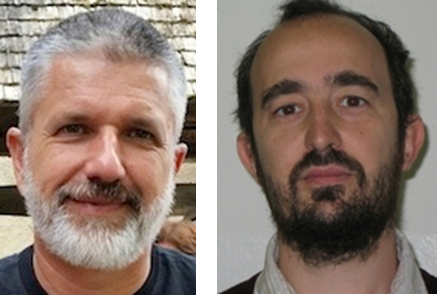
Mauro Sambi (mauro.sambi@unipd.it), Francesco Sedona (francesco.sedona@unipd.it)
The SSC Group’s research activities deal with the thermo- and photoinduced on-surface synthesis of 2D materials starting from supramolecular assemblies of functionalized precursors, with a particular emphasis on the preservation of a high degree of long-range order throughout the process. The group manages an ultra-high vacuum chamber equipped with scanning tunneling microscopy (STM) and other surface science tools, interfaced with both single-wavelength and tunable laser sources for in-vacuum surface photochemistry with molecular resolution. An ambient STM/AFM instrument for solid/liquid and solid/air investigations complements the available equipment. The group has ongoing collaborations with several Italian and European groups active in the field of on-surface synthesis and molecular magnetism.
- Metal-Free on-Surface Photochemical Homocoupling of Terminal Alkynes, J. Am. Chem. Soc., 2016, 138, 10151-10156.
- Tunable Band Alignment with Unperturbed Carrier Mobility of On-Surface Synthesized Organic Semiconducting Wires, ACS Nano, 2016, 10, 2644-2651.
- Molecules–Oligomers–Nanowires–Graphene Nanoribbons: A Bottom-Up Stepwise On-Surface Covalent Synthesis Preserving Long-Range Order, J. Am. Chem. Soc., 2015, 137, 1802-1808. (WOS highly cited paper)
- Stereoselective Photopolymerization of Tetraphenylporphyrin Derivatives on Ag(110) at the Sub-Monolayer Level, Chem. Eur. J., 2014, 20, 14296-14304. (Hot Paper, Back Cover).
- Tuning the catalytic activity of Ag(110)-supported Fe phthalocyanine in the oxygen reduction reaction, Nat. Mater., 2012, 11, 970-977.
26. Systems Chemistry
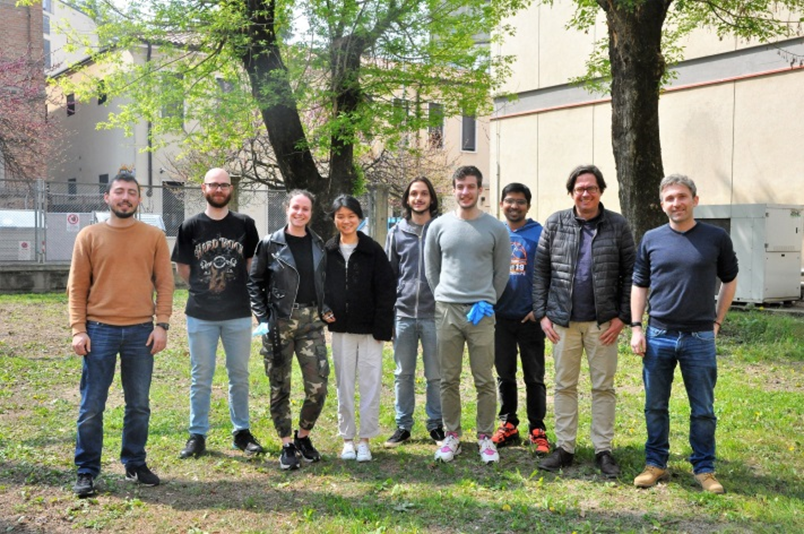
Prof. Leonard Prins (leonard.prins@unipd.it); Dr. Luca Gabrielli (luca.gabrielli@unipd.it); Dr. Haridas Kar (haridas.kar@unipd.it)
Systems chemistry aims at understanding how properties emerge from complex chemical systems. Chemists have so far approached the understanding of biology by reducing complex events to simple reactions and interactions. However, despite decades of intense biomimetic research, it is currently still unclear which conditions are required for a mixture of chemicals to become ‘alive’ and acquire the ability to grow, communicate, move, evolve, etc... The key point is that these so-called emerging properties cannot be traced back to a single molecule, but are the product of an ensemble of molecules. Systems chemistry is considered the third wave in the evolution of chemistry after the discovery of covalent and noncovalent bond-formation. The capacity to understand the chemical origin of life will permit the development of intelligent materials with ‘life-like’ properties.
References:
- Das, K.; Gabrielli, L.; Prins, L.J. Chemically fueled self-assembly in biology and chemistry, Angew. Chem. Int. Ed. 2021, 60, 20120-20143.
- Rosa-Gastaldo, D.; Pečiukėnas, V.; Hunter, C.A.; Gabrielli, L. Duplex vs. folding: tuning the self-assembly of synthetic recognition-encoded aniline oligomers Org. Biomol. Chem. 2021, 19, 8947-8954.
- Gabrielli, L.; Hunter, C.A. Supramolecular catalysis by recognition-encoded oligomers: discovery of a synthetic imine polymerase Chem. Sci. 2020, 11, 7409-7414.
- Chen, R.; Neri, S.; Prins, L.J. Enhanced catalytic activity under non-equilibrium conditions, Nat. Nanotechnol. 2020, 15, 868-874.
- Ragazzon, G.; Prins, L.J. Energy consumption in chemical fuel-driven self-assembly, Nat. Nanotechnol. 2018, 13, 882-889.
Updated Apri 26th, 2022
27. Theoretical Chemistry Group - TCG

Prof. Antonino Polimeno (antonino.polimeno@unipd.it); Prof. Barbara Fresch (barbara.fresch@unipd.it); Dr. Diego Frezzato (diego.frezzato@unipd.it); Prof. Laura Orian (laura.orian@unipd.it); Prof. Mirco Zerbetto (mirco.zerbetto@unipd.it)
At TCG we develop theoretical models and computational simulations of molecular properties and reactivity. We address a wide range of physical chemistry topics, from magnetic and optical spectroscopies to the design of functional molecular structures using molecular dynamics, quantum-statistical and stochastic thermodynamics methods. We investigate also novel approaches, like machine learning techniques and quantum technologies, for theoretical and computational chemistry. Current research subjects are:
- coarse-grained description of biomolecules and supramolecular systems
- deterministic and stochastic kinetics in chemical reaction networks
- computer-guided rational design of bio inspired molecules and catalysts for applications to health and sustainability
- design of quantum nanodevices for molecular logic
- models of quantum dynamics and spectroscopic response
- Strategies to simulate dephasing-assisted quantum transport on digital quantum computers. New Journal of Physics 2022, 24, 023039.
- Effect of methylmercury binding on the peroxide reduction potential of cysteine and selenocysteine. Inorg. Chem. 2021, 60, 4646-4656.
- Stochastic modelling of C-13 NMR spin relaxation experiments in oligosaccharides. Molecules 2021, 26, 2418
- Sensitivity analysis of the reaction occurrence and recurrence times in steady-state biochemical networks. Math. Biosci. 2021, 333, 108518
- Parameter free evaluation of SN2 reaction rates for halide substitution in halometane. Phys. Chem. Chem. Phys. 2022, 24, 7474.
updated April 6th, 2022
28. Wet Chemistry and Colloids Group
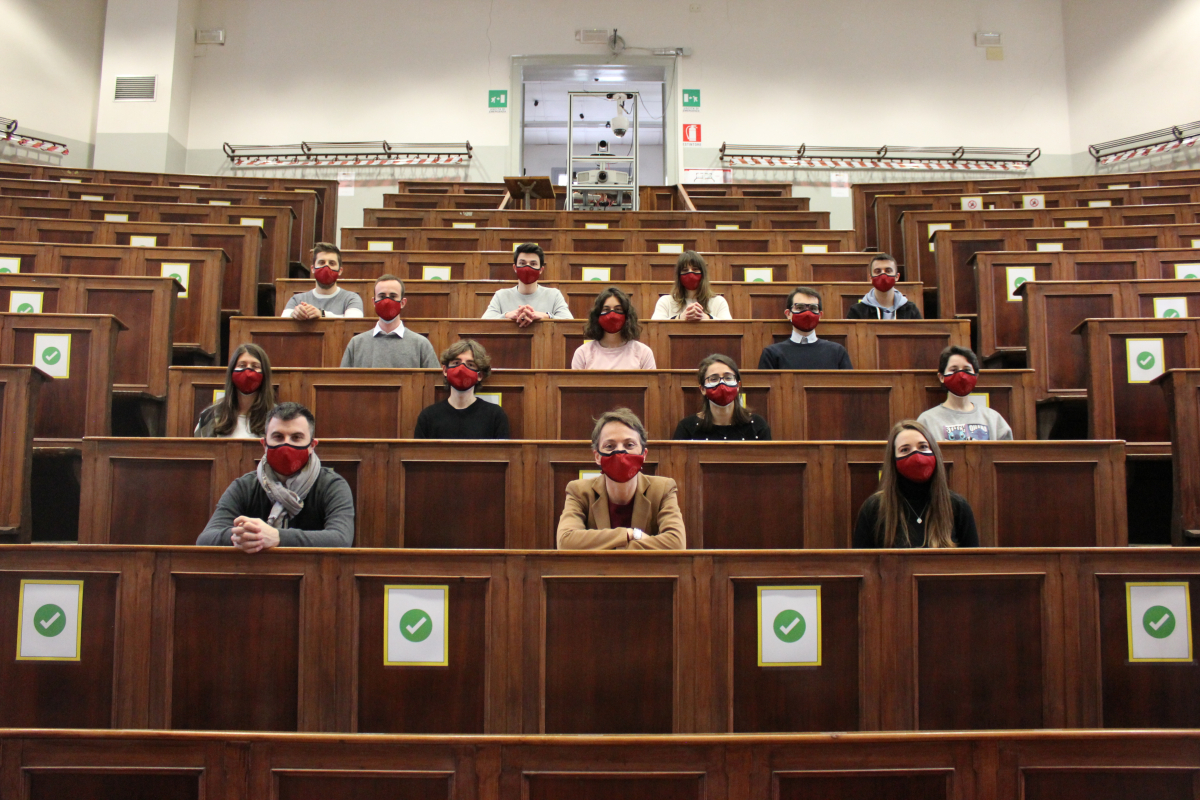
Prof. Silvia Gross (silvia.gross@unipd.it); Dr. Francesco Lamberti (francesco.lamberti@unipd.it)
The group research activities focus on metal oxocluster-reinforced organic-inorganic hybrid materials, low temperature hydrothermal synthesis of nanocrystalline transition metal oxides and sulphides in an aqueous environment, nucleation and growth from optimised colloidal suspensions, inorganic chemistry in a nanoreactor with room temperature miniemulsion approach to crystalline inorganic nanostructures, Crystallisation of small and monodispersed nanoparticles via microfluidics, surface chemistry and functionalisation, structural and spectroscopic characterisation of inorganic nanostructures and Structural and spectroscopic characterisation of inorganic nanostructures.
The laboratory facilites include two fully equipped laboratories for inorganic, molecular and colloidal synthesis
- Schlenk lines for the synthesis of highly air-sensitive inorganic and metalorganic compounds;
- A complete equipment for hydrothermal synthesis or the preparation of inorganic materials under non-conventional conditionsConventional Memmert UNE-400 for hydrothermal synthesis;
- Ball miller Retsch MM200 for the milling/grinding of samples and for mechanosynthesis, up to 60 Hz;
- Centrifuge Hermle Z366: Universal table top centrifuge;
- UV lamps Helios Italquartz 125 W and 400 W, for UV-activated reactions (e.g. polymerization processes);
- Sonicator Laborsonic P Sartorius Stedim ultrasonicator for the homogeneization of miniemulsions;
- Custom made spin, dip and spray coaters ror the deposition of inorganic and hybrid films and coatings;
The lab is also equipped with an ultrasonic spraying system that allows the fabrication of thin and uniform films for different applications. The spray gun can process both liquid and colloidal solutions creating micrometric drops on the surface. Furthermore, the deposition is performed in a dedicated climate chamber and, optionally, the sample can be heated up to 500 degrees by a precise titanium hotplate.


